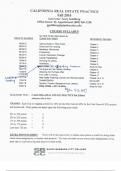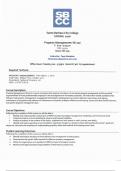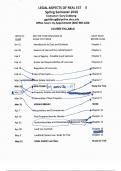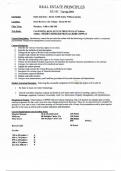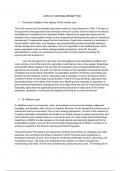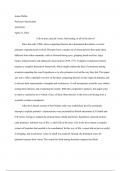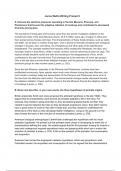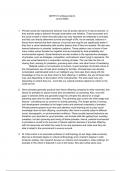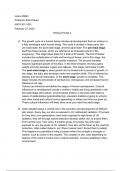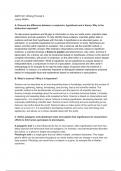Santa Barbara City College
Latest uploads at Santa Barbara City College. Looking for notes at Santa Barbara City College? We have lots of notes, study guides and study notes available for your school.
-
13
- 0
- 0
All courses for Santa Barbara City College
Latest notes & summaries Santa Barbara City College
RE 102 Real Estate Practices (3 Units) is a foundational course designed to immerse students in the core practices that govern real property ownership and transactions. Suggested prerequisites include RE 101, with a commitment of 54 lecture hours delivering a deep dive into the vital components of real estate practice. The course addresses fundamental principles essential for anyone pursuing a career in real estate, making it one of the eight required courses for eligibility to sit for the Ca...
RE 207 Property Management (3 Units) is an in-depth examination of real property management. Prerequisites recommend RE 101, offering 54 hours of lecture-based learning that immerses students in the fundamental aspects of property management. This course is crucial for those aiming to take the California Real Estate Broker's Exam, forming one of the eight mandatory courses. It can also be used as the third elective course taken to fulfill the requirements to qualify for the California Real...
RE 204 Legal Aspects of Real Estate (3 Units) is an extensive exploration of California real estate legalities designed to furnish you with the procedures essential for the transfer, use, and acquisition of property. Prerequisites suggest completion of RE 101, and the course offers 54 hours of lecture-based learning, ensuring a comprehensive understanding of the subject. This course is essential for those aspiring to take the California Real Estate Broker's Examination, standing as one of ...
The Principles of Real Estate course serves as a foundational step for anyone interested in a career in real estate. Whether you’re aiming to become a licensed real estate agent, broker, or investor, this course provides essential knowledge and terminology. Includes: class syllabus, course outline, associated book slide deck, supplemental hand-written notes, and many California-specific documentary examples. Here are the key aspects covered: Course Purpose and Content: The course introduce...
The basis of the argument is that agriculture was oversold in terms of success; it did not result in the ascend and brilliance of civilization that it promised. Rather, Diamond and supporters argue that the transition from a hunter-gather society to one of agricultural farming was the start of a disastrous development. Progressivists argue that the introduction of agriculture resulted in a decrease in human health, worse diets, new diseases, and unsustainable practices eventually leading to clim...
Complex evolutionary history requires a complex theoretical framework, which might explain the lack of consensus among scientists regarding the exact hypothesis as to why primates evolved the way they did. This paper sets out to offer a detailed overview of the three competing theories on the origin of primates and to discuss their representative strengths and weaknesses. It will incorporate scientific case studies testing these theories and evaluating the results. With this comparative analysis...
Discuss the selective pressures operating in the late Miocene, Pliocene, and Pleistocene that favored the adaptive radiation of monkeys and contributed to decreased diversity among apes. Name and describe, in your own words, the three hypotheses of primate origins
Primate social and reproductive behavior may be purely natural or it may be learned; i.e they actively adopt a behavior through observation and imitation. These processes and the social context in which they take place are very important and elaborate in primates, and they can directly determine survival and length of life.
The growth cycle of a human being includes all development from an embryo to a fully developed adult human being. This cycle is divided in three parts; the pre-natal state, the post-natal stage, and the adult state. The pre-natal stage itself has three periods, which are referred to as trimesters (parts of the pregnancy).
Discuss the difference between a conjecture, hypothesis and a theory. Why is the distinction important Define polygenic and pleiotropic traits and explain their significance for researchers’ efforts to link human genotypes to phenotypes.

